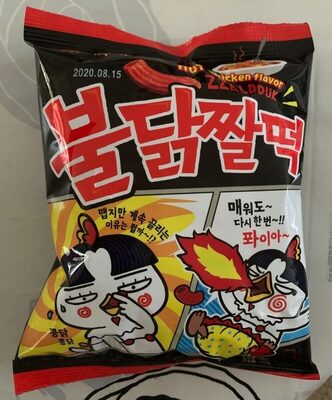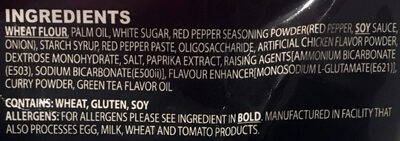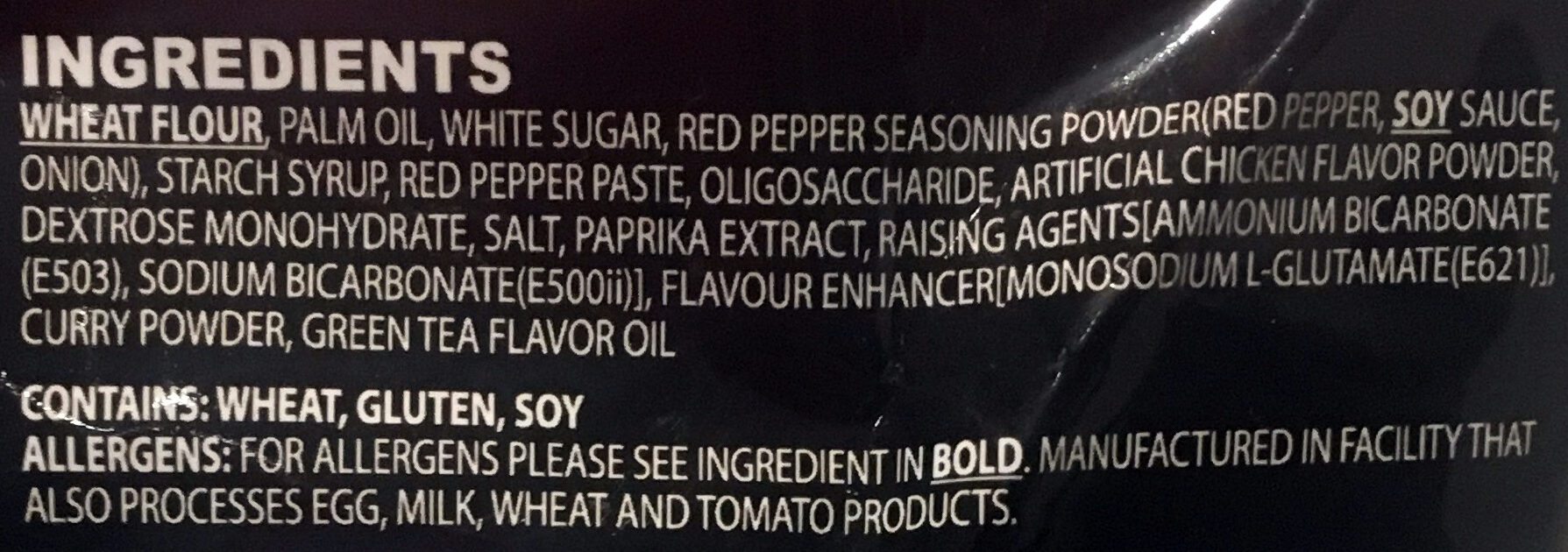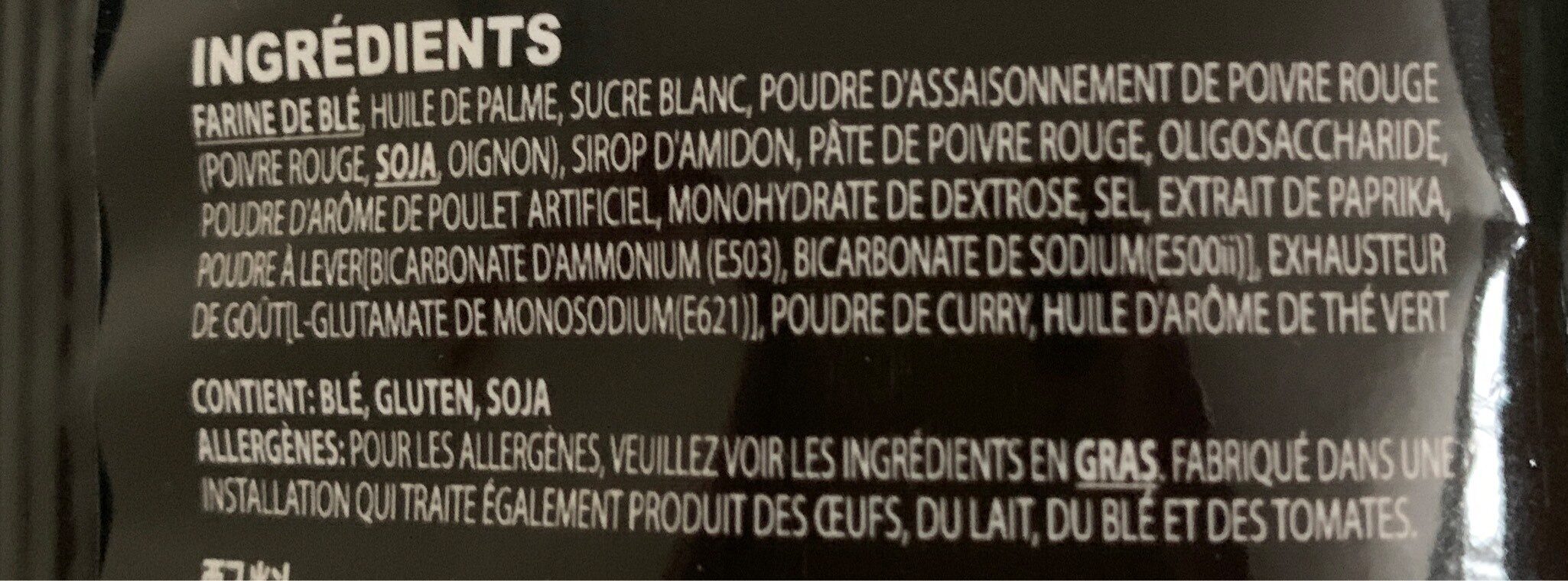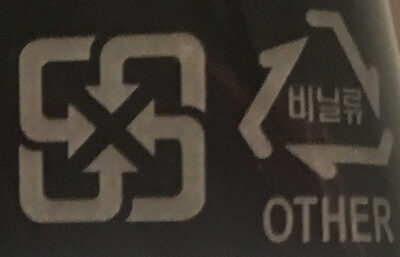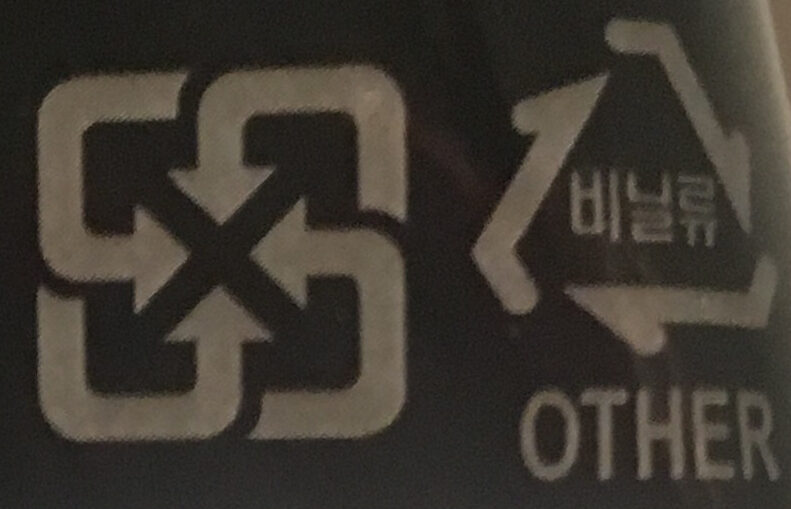Zzaldduk hot chicken flavour - Samyang Foods Co. - 120 g
바코드: 8801073310735 (EAN / EAN-13)
양: 120 g
포장: en:multilayer-composite, 90 C/X
브랜드: Samyang Foods Co., Ltd.
카테고리: en:Snacks, en:Salty snacks, en:Appetizers, en:Chips and fries, en:Crisps
성분의 유래: 대한민국
제조 또는 가공 장소: Korea
상점: Global Food, Maxima
판매의 나라: 대한민국
Matching with your preferences
Report a problem
데이터 출처
추가된 제품 로 kiliweb
제품의 마지막 편집 페이지 로 chasfox.
상품 페이지는 다음 사람들에 의해 수정되었습니다. ecoscore-impact-estimator, odinh, yuka.SDRZck5ib1kvUGdJZzhFZXdBTHJ4WU5UNUtTekIwcU9KdVVYSWc9PQ, yuka.sY2b0xO6T85zoF3NwEKvlhZZatWHpSDaakfkk1zVzfy0PqPDPc1j2JL8Yqo.
데이터가 불완전하거나 부정확 한 경우, 당신은 완료하거나 문서를 편집하여 수정할 수 있습니다.
